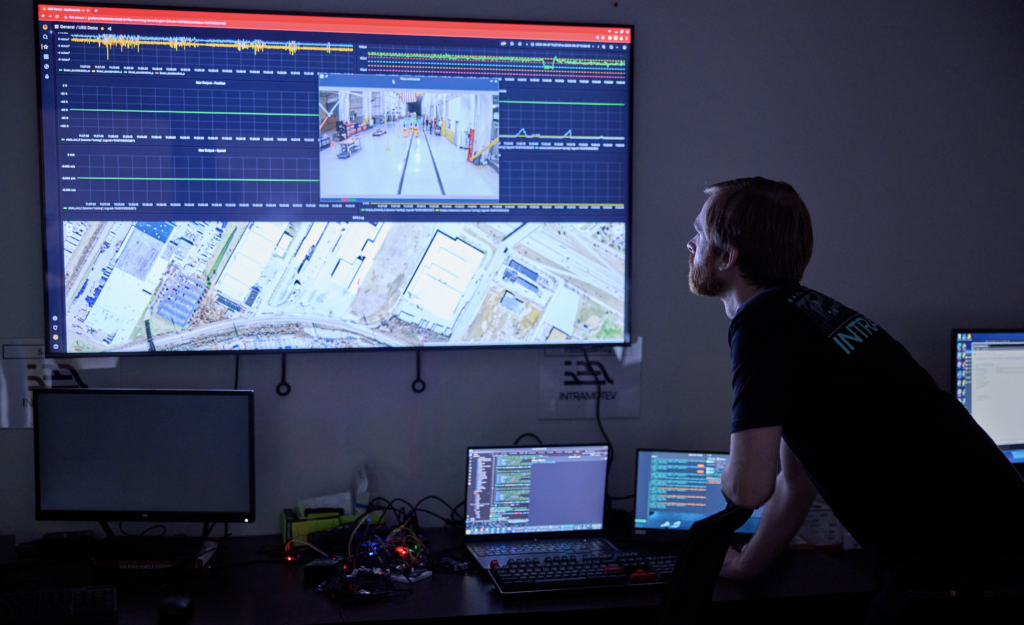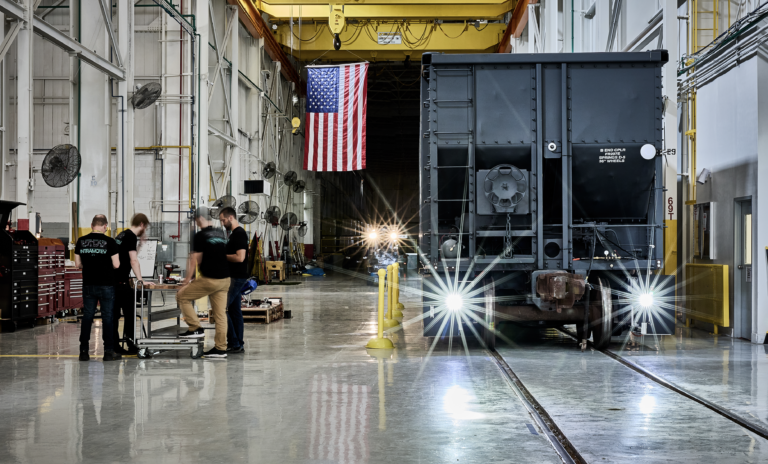 AAVI recently caught up with Alex Peiffer, COO and co-founder of Intramotev, which is on a mission to transform the future of US rail freight through a new generation of autonomous, zero-emission rail vehicles. Founded in 2020 in St Louis, Missouri, the company’s aim is to decarbonize and improve asset utilization in the supply chain by reducing diesel locomotive use for the US$700bn worth of goods moved by rail annually in the USA.
AAVI recently caught up with Alex Peiffer, COO and co-founder of Intramotev, which is on a mission to transform the future of US rail freight through a new generation of autonomous, zero-emission rail vehicles. Founded in 2020 in St Louis, Missouri, the company’s aim is to decarbonize and improve asset utilization in the supply chain by reducing diesel locomotive use for the US$700bn worth of goods moved by rail annually in the USA.
Can you describe your company?
Intramotev is a technology company focused on transforming modern freight movement by developing autonomous, zero-emission rail solutions that decrease costs, increase utilization and safety, and promote environmental responsibility. To achieve that, we’ve assembled a team of engineers and developers from the rail, aerospace and automotive industries to deploy our TugVolt and ReVolt technologies. The TugVolt is a railcar retrofit that enables material movement without the need for a locomotive, while the ReVolt is a retrofit that recycles waste energy in traditional trains – offering customers a 20% to 50% reduction in diesel costs.
Where does autonomous operation offer the greatest value to rail freight?
The first and last legs of trips are where autonomous technology delivers the most value to the industry. A long distance shipment from Los Angeles to Chicago via rail is incredibly efficient, but the system breaks down on short distance trips, resulting in goods stranded in rail yards until trains can be built long enough to move profitably. Our TugVolt technology enables rail freight to move materials with the flexibility of a truck, without breaking the existing model of rail operations. This will enable the rail industry to compete with trucking on speed of delivery at a fraction of the cost and environmental emissions. Our goal as a company is to be a tool for growth for the rail industry and we’re confident that our technology will help keep rail competitive for the next two hundred years.
What are the key sensors and technologies that enable autonomous rail freight operation?
Autonomous rail freight operations rely on a suite of key sensors and technologies to achieve safe and robust autonomy. Cameras, lidar and radar are all used to sense the environment and provide situational awareness for the platform, while GPS is used for precise localization. Integration of these technologies using signal processing, machine learning algorithms and advanced onboard computing enables seamless operation with safety and reliability.
What is your current status – any customers announced or trials underway?
We are currently deploying our ReVolt technology at the Cumberland Mine in Waynesburg, Pennsylvania, with our partner Iron Senergy. We will also be deploying our TugVolt trains at a calcium mine in northern Michigan later this year, in partnership with the state of Michigan’s Office of Future Mobility and Electrification.
What is your view of the autonomous trucking sector – is there an opportunity to work together or are you in direct competition?
There’s definitely value in the autonomous trucking model, particularly when it comes to decarbonizing the industry. But with or without human truck drivers, trucking remains a demonstrably less safe and less sustainable way to move goods. Rail has the energy efficiency advantage from the basic physics of steel wheels on steel tracks with rail being about one seventh of the rolling resistance compared to rubber tires on roads. While we welcome any potential areas of collaboration, we also remain confident that autonomous rail represents the future of freight transportation.



